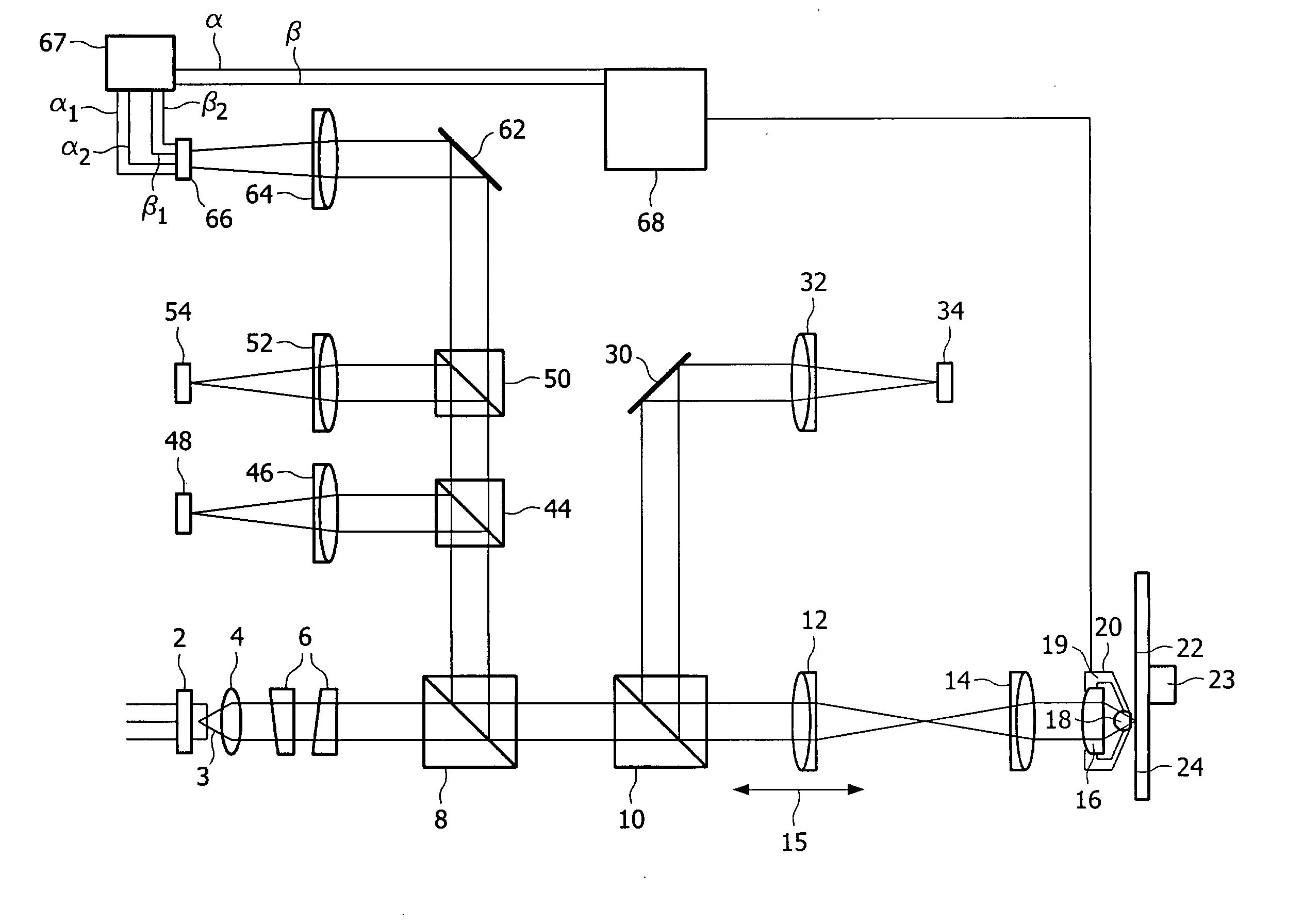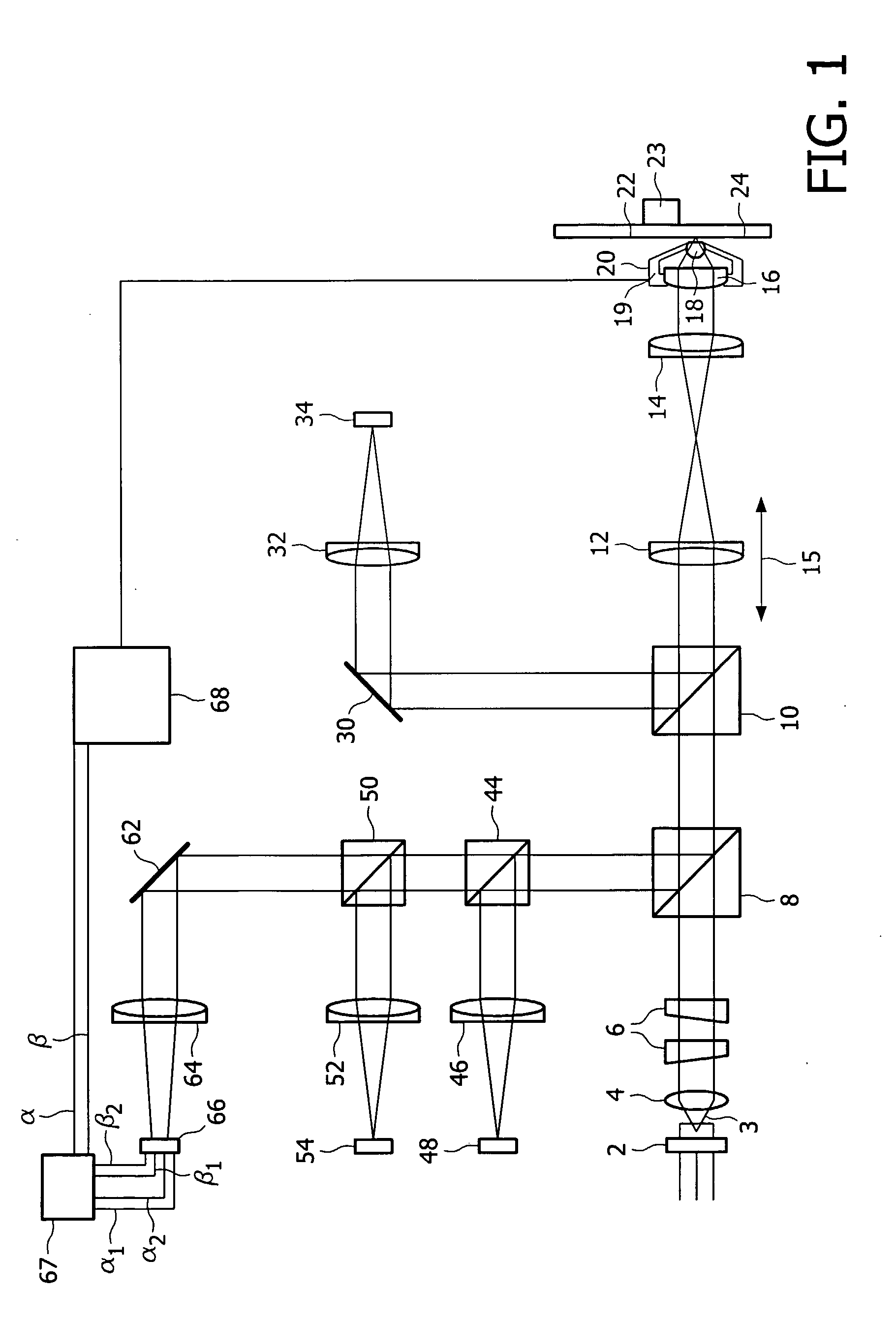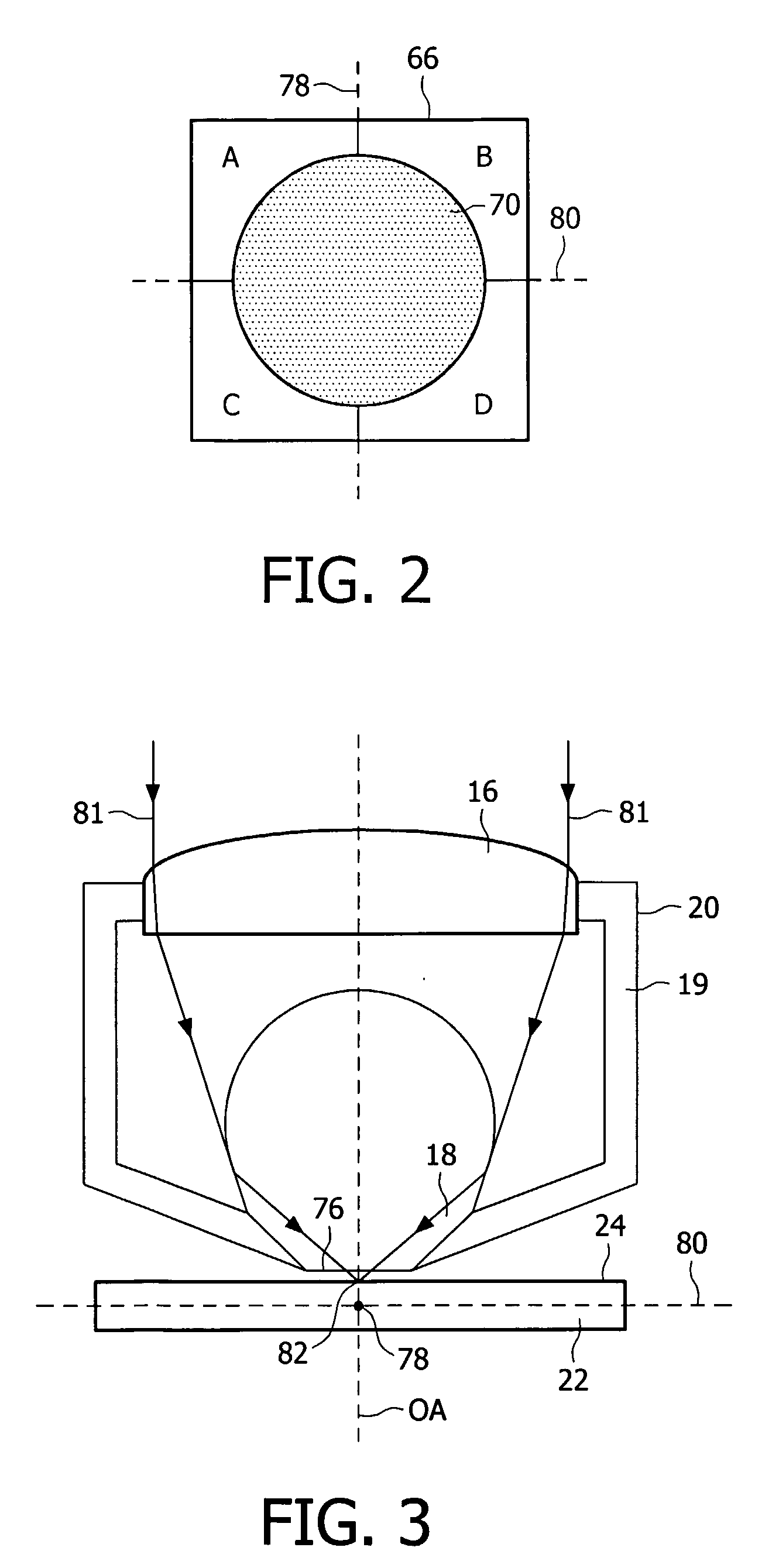Optical Scanning Device
a scanning device and optical technology, applied in the field of optical scanning devices, can solve the problems of mechanical tolerance, deterioration of the efficiency of evanescent coupling, and deviation from the desired tilt alignment, and achieve the effect of accurate and efficient scanning of record carriers
- Summary
- Abstract
- Description
- Claims
- Application Information
AI Technical Summary
Benefits of technology
Problems solved by technology
Method used
Image
Examples
Embodiment Construction
[0040]FIG. 1 shows schematically an optical scanning device for scanning a record carrier in accordance with an embodiment of the present invention.
[0041]The optical scanning device comprises a radiation source system which is arranged to generate a radiation beam. In this embodiment the radiation source system is a laser 2 and the radiation beam is a laser beam 3 having a predetermined wavelength λ, for example approximately 405 nm. During both a start-up procedure and a record carrier scanning procedure of the optical scanning device, the radiation beam 3 passing along an optical axis OA of the optical scanning device (not indicated) is collimated by a collimator lens 4 and its cross-sectional intensity distribution shaped by a beam shaper 6. The radiation beam 3 then passes through a non-polarising beam splitter 8, followed by a polarising beam splitter 10 and is then focused by a first focus adjustment lens 12 and a second focus adjustment lens 14. The focusing of the radiation ...
PUM
 Login to View More
Login to View More Abstract
Description
Claims
Application Information
 Login to View More
Login to View More - R&D
- Intellectual Property
- Life Sciences
- Materials
- Tech Scout
- Unparalleled Data Quality
- Higher Quality Content
- 60% Fewer Hallucinations
Browse by: Latest US Patents, China's latest patents, Technical Efficacy Thesaurus, Application Domain, Technology Topic, Popular Technical Reports.
© 2025 PatSnap. All rights reserved.Legal|Privacy policy|Modern Slavery Act Transparency Statement|Sitemap|About US| Contact US: help@patsnap.com



